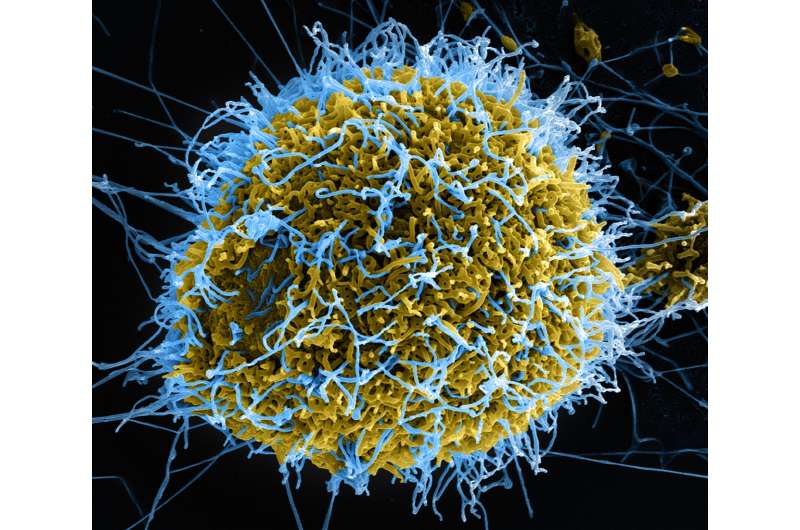How the human immune system protects against Ebola

Two types of human antibodies that target different parts of the Ebola virus synergize their antiviral effects by inhibiting different steps of infection, according to a study published August 23 in the open-access journal PLOS Pathogens by Philipp Ilinykh and colleagues from the University of Texas Medical Branch, Vanderbilt University, and Ragon Institute. These new insights into how the human immune system protects against Ebola infections could lead to the development of effective antibody-based therapies.
The unprecedented Ebola virus epidemic in West Africa from 2013 to 2016 resulted in more than 11,000 human fatalities, demonstrating the urgent need for treatments against this virus and related highly pathogenic filoviruses. Despite intense international collaborative efforts, there is still no licensed therapeutic available against filovirus disease. Further progress in the development of effective antibody-based therapies for filovirus infections requires a better understanding of the mechanism underlying their protective effect. Although the human immune system can produce strong antibody responses against filoviruses, the effects on multiple steps of filovirus infection have not been clear.
To address this gap in knowledge, Ilinykh and colleagues evaluated the mechanisms underlying the antiviral effects of a diverse panel of monoclonal antibodies obtained from several survivors of natural Ebola virus infections. Monoclonal antibodies that targeted either the glycan cap or stem region of the viral glycoprotein interfered with and targeted different steps of filovirus infection. For example, glycan cap-specific antibodies inhibited viral attachment to the cell surface, cell-to-cell transmission and virion budding. By contrast, stem-specific antibodies triggered the activation of natural killer cells and the destruction of infected cells by monocytes and neutrophils.
Taken together, the findings suggest that different types of antibodies exert cooperative effects by blocking distinct steps of filovirus infection. According to the authors, antibody cocktails that combine complementary antiviral effects should be tested in future studies.
Bukreyev adds, "The current approach for treatment of filovirus infections with antibody cocktails tested in animal models utilizes the principle of targeting of non-overlapping epitopes. Our study suggests that possible synergistic effects of antibodies which block various steps of viral replication should be also considered."
More information: PLOS Pathogens (2018). journals.plos.org/plospathogen … journal.ppat.1007204

















